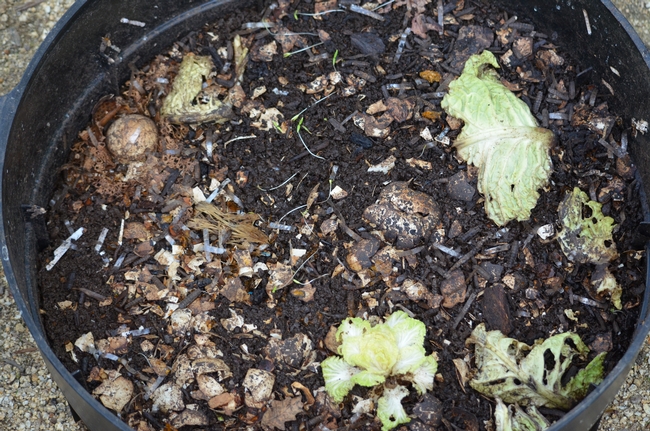Posts Tagged: composting
UC Davis voted America’s “coolest” school
After just experiencing my first Davis summer, I find it hard to describe anything in Davis as cool. But according to Sierra Magazine, UC Davis is just that. So much so, that the school was recently named the #1 Coolest School in the nation. Granted, they weren’t talking about the weather. Instead, they were referring to UC Davis’ environmental stewardship.
With all that UC Davis does to create and promote environmentally friendly programs and facilities, it’s no wonder the university just received this high honor. The campus is on track to reduce campus greenhouse gas emissions back to 1990 levels by 2020 and reduce campus electrical use by 60 percent by 2015.
UC Davis also provides sustainable forms of transportation to 85 percent of students and 46 percent of employees. As a fairly new Davis resident, I’m still constantly blown away by the number of bikes on campus, especially during the first week of school. Being from Long Beach, I always feel a pang of culture shock watching the Davis police handing out bike traffic violations instead of combating violent gang activity.
In 2011, UC Davis encouraged recycling, composting and reuse efforts that prevented 64 percent of campus waste from entering landfills. Sierra Magazine praised the university for its green purchasing, spending more than 20 percent of its $5.6 million food budget on local and organic products.
UC Davis also received international attention last fall, when it officially opened the doors to UC Davis West Village, the nation’s largest planned zero net energy community.
“At UC Davis, sustainability is one of our core values,” said UC Davis chancellor Linda P.B. Katehi. “I am very proud of the students, faculty and staff who have worked so hard to make this achievement possible and to invest in a more sustainable future for our campus.”
Other California schools that made the top 10 included Stanford University at number 3, and UC Irvine at number 9. California had the highest contingency of schools in the top 10 list.
Congratulations to UC Davis, for earning the title of Coolest School in the middle of this summer’s heat!
Watch this Sierra Club video highlighting UC Davis’ green achievements to learn more:
Biodynamic Gardening and Agriculture
Disclaimer: This article does not express the views held or advocated by UCCE or its affiliates with regard to biodynamic gardening or farming. It only seeks to introduce the concept of biodynamics to readers as another alternative system of sustainable gardening.
For all of you gardening enthusiasts (which I assume all of you are, since you are reading this blog), it is likely that at some point, you have come across the term “biodynamic” gardening or farming.
Biodynamic gardening/farming is usually regarded as one of the earliest organized systems of organic gardening, emphasizing the interrelationships between soil, plant and livestock management (i.e., the garden or farm is regarded as an organism). The foundation for biodynamic gardening or farming arises from a series of lectures given in 1924 by the Austrian philosopher, Rudolf Steiner, to farmers seeking his assistance. Perhaps the defining feature of biodynamic gardening/agriculture and what people find most intriguing, is the use of what is known as “preparations,” (of which there are nine (9), divided between field and compost preparations) which generally consist of manure and/or specific flowers/herbs fermented in a vessel such as a cow horn or the bladder of a red deer/elk, as applicable. The preparations are typically diluted with water, stirred in an exacting manner for a specific period of time, and then sprayed onto a field or compost to stimulate plant growth, as appropriate, and microbial activity. Although these preparations sound esoteric and inaccessible to the average person, people seeking to incorporate biodynamic methods in their garden, may purchase preparations from biodynamic trade organizations and/or other biodynamic gardeners and farmers.
The popularity of biodynamics has gained steam in the mainstream, as many wineries, both local (some even in Napa and Sonoma Counties!) and abroad, have adopted such practices.
For further information on biodynamic gardening or farming, please feel free to visit https://attra.ncat.org/attra-pub/summaries/summary.php?pub=290 or google the term, “biodynamic gardening,” “biodynamic farming,” or “biodynamic agriculture.”
Worms: A Confession
I have a confession to make…I love my worms. This relationship began years ago, when I thought it would be fun for my kids to get a pound of red wrigglers (Eisenia fetida) in the mail and begin learning about composting. Fourteen years later, I’m still going strong. I love my worms because they’re easy, odor-free, and need little attention. As long as the bedding remains moist, worms can survive for weeks without any fresh scraps. Worms are the ultimate recyclers, eating all my kitchen scraps and leaving “black gold” (a nutrient-rich compost), made in about 60 days. The worm castings are much higher in available nitrogen, phosphates, and potash than your average topsoil. Just this weekend, I used the castings to: top dress my houseplants; potting medium for transplanting; added to planting holes for young seedlings; and brewed some “compost tea” to use as a liquid fertilizer. Every time I water, organic fertilizer is delivered to the roots without any danger of over fertilizing or burning.
If you want to learn more about worm composting, I suggest reading, “Worms Eat My Garbage” by Mary Appelhof. This book is very informative and a great place to start learning about vermicomposting (worm composting). An Internet search on ‘red wrigglers for composting’ you will find many informative sites with will information ranging from where one can buy red wrigglers as well as instructions for building and maintaining a worm bin.
I can say with great confidence, if you give worm composting a try, you too, will develop a strange fondness for these amazing composters!



